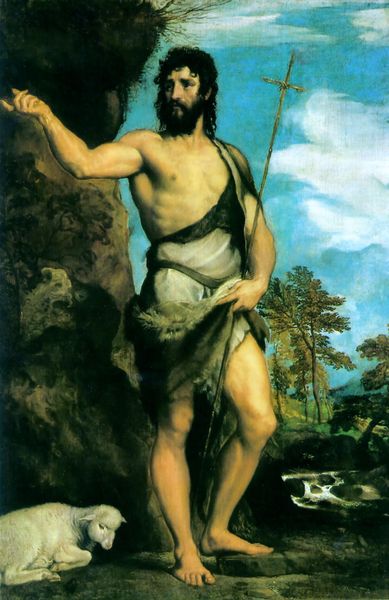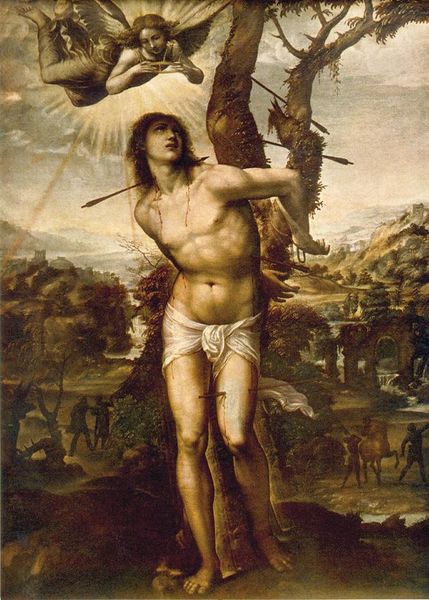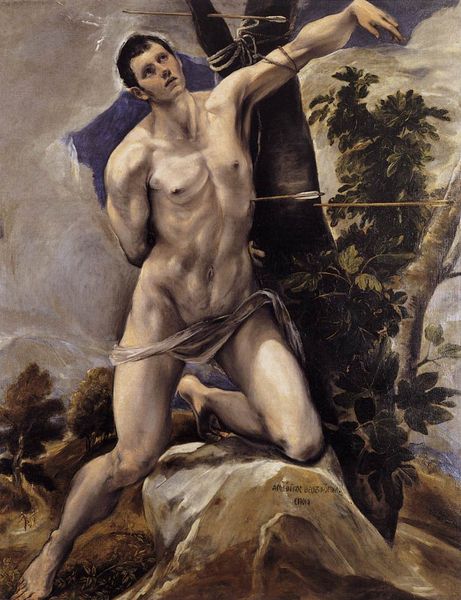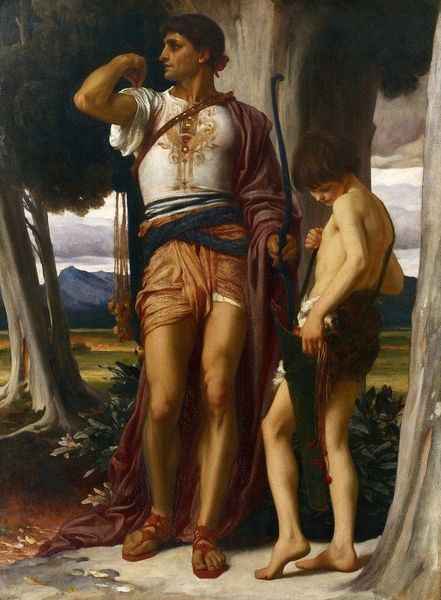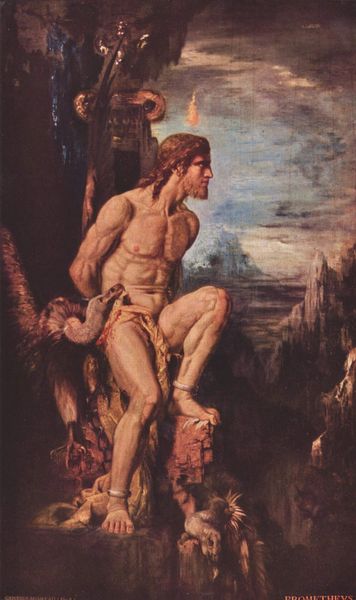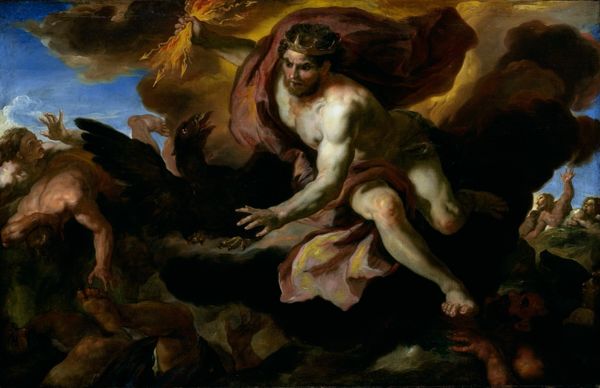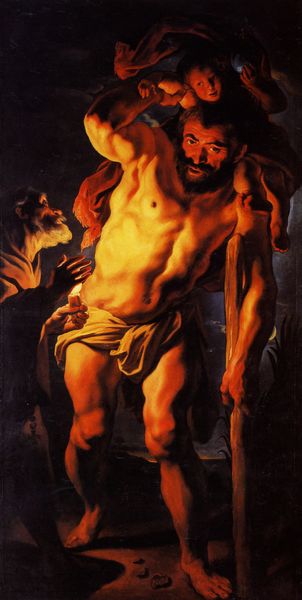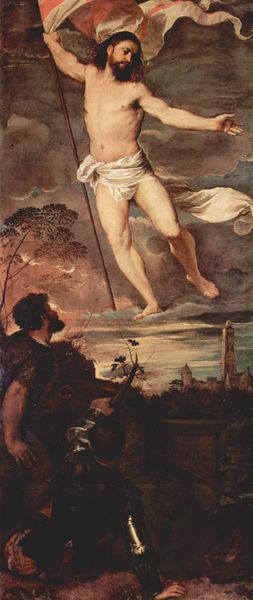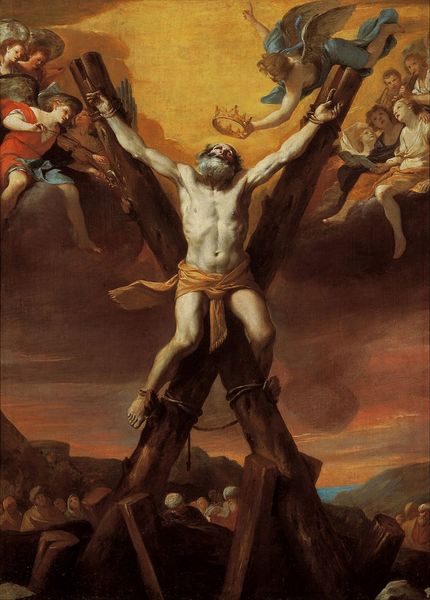
St. John the Baptist 1600
0:00
0:00
elgrecodomenikostheotokopoulos
Fine Arts Museums of San Francisco, San Francisco, CA, US
painting, oil-paint
#
portrait
#
painting
#
oil-paint
#
landscape
#
mannerism
#
figuration
#
christianity
#
history-painting
#
italian-renaissance
#
christ
Dimensions: 111 x 66 cm
Copyright: Public domain
Editor: This is El Greco’s “St. John the Baptist” from around 1600, painted in oil. The figure feels elongated and there's a strong sense of verticality in the composition. What stands out to you? Curator: The painting certainly draws you upward, doesn’t it? But I am struck by the defiance here. Think about the Counter-Reformation, when El Greco was painting this. The Council of Trent had very specific ideas about how religious figures should be depicted, and the purpose they served. Does this image adhere to those rules? Or does it, in its Mannerist style, resist? Editor: I see what you mean. His body is somewhat exposed, and his gaze isn't humble but almost challenging. Is the Mannerist style a form of rebellion in itself? Curator: Precisely! Mannerism, with its distortions and artificiality, can be interpreted as a rejection of the Renaissance’s emphasis on naturalism and balance. Consider how El Greco uses the human form - the elongated limbs, the almost unnatural pose. This isn't just about aesthetics; it's a visual language questioning the established order. Where does the landscape figure in your view? Editor: The lamb and banner are standard symbols for Saint John the Baptist. Perhaps they are strategically placed in a rather dark environment? Curator: They certainly create symbolism. But the landscape and stormy sky heighten the sense of unease. El Greco wasn't simply illustrating a saint; he was grappling with questions of faith, power, and the individual's role in a tumultuous time. And the lamb's presence further underscores the theme of sacrifice, no? What happens when we consider other symbols in the painting? The cross for instance. Editor: Thinking about it that way changes my whole perspective on the painting. It's not just a religious portrait, but a complex commentary on the artist's world. Curator: Exactly! By looking at art through the lens of history, culture, and theory, we can uncover deeper meanings and appreciate the artwork's engagement with social and political issues. There are multiple layers of complexity at play!
Comments
No comments
Be the first to comment and join the conversation on the ultimate creative platform.
